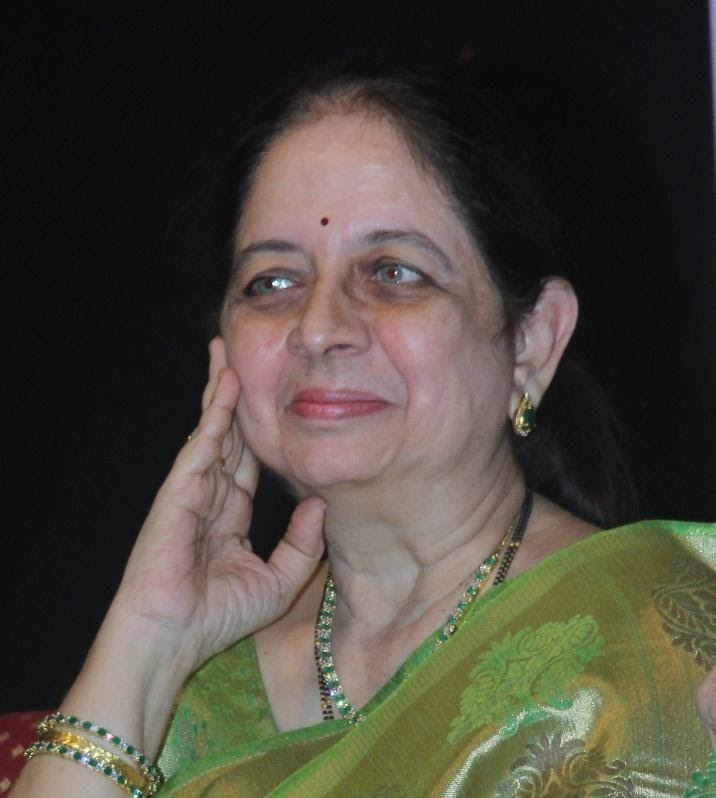Itihāsa | इतिहास
Itihāsa literally means “so indeed it was”. This pillar delves into variety of historical narratives about India and brings out authentic and well researched Indian Perspectives on Indian History.
The Significance of Dashrajna War (दाशराज्ञयुद्ध)
Dr. Manjusha Gokhale | May 08, 2022 | 0 Comments | 3 Min.
Every society has some historical events which are etched in its memories for its significance and are perpetually recollected, narrated and studied. For instance, Industrial revolution, French revolution, and the two World Wars are few such events in the world history. Similarly, in the Vedic history one such epochal event is Dashrajna War. (दाशराज्ञयुद्ध)
The Dashrajna War happened around 3000 BC when the Aryans dwelled primarily in Saptasindhu region. The area which extended till Afghanistan in the west and Yamuna River in the east was dwelled primarily by the Aryan groups but various other tribes lived there as well. This part was endowed with fertile land, favourable climatic conditions and abundance of water. Farming was thus one of the major sources of revenue for the people. Intelligibly, life of the people in the Vedic times depended heavily on the rivers. Apart from the river Saraswati, which was considered as life line during the Vedic times, other rivers such as Sindhu and its tributaries and Yamuna were the main rivers where Vedic civilisation flourished.
Aryan society had two prominent classes– Kshatriya or the warrior class and the Brahmins or the priestly class. These two complemented each others in many ways. All the groups within the broad Aryan fold had one leader or King and one priest. Generally the King would wage wars while the priests were tasked to please the gods through their mantras and to get the divine boons to help the king win wars. Kings would perform sacrificial ceremonies to please gods under the guidance of the priest and in return the priest would be given modest endowments from the King; such was the routine in the Vedic times.
Between the river Saraswati and Yamuna lived the famous Bharata (भरत) clan. Though they were few in number, the Bharata clan had great warriors known for its fighting abilities. Sudas was the king of the Bharata clan while Vishwamitra of Kushik gotra was their priest. The Puru clan lived on the other side of Saraswati. The other important Trutsu (तृत्सु) clan, which was once part of the Bharata clan, ruled the eastern side of the Parushni (परुष्णी, now known as the Ravi) river. Vasishtha was the priest of Trustu clan. The area under the Bharata, Puru and Trutsu clan together was known as the Madhyadesh. Puru along with Anu, Yadu, Druhyu and Turvash were together called as Panchajan (पंचजन). Almost all of the Sindh-Punjab area of today was then under the control of the Panchajan. The other notable clans living in the same part were Krivi and Matsya. The far north-western parts were dwelled by the non-Aryan groups like Pakth (पक्थ), Bhalanas (भलानस्), Vishanin (विषाणिन्), Alin (अलिन) and Shiva (शिव). Similarly on the eastern side near Yamuna lived Aja, Shingu, Yakshu and other groups. These groups often clashed over land and farming rights and conflicting claims over water bodies. Aryan and non-Aryan groups also had conflicts over language, religion and the concept of God among other things. An eventual clash between these two groups was thus inevitable. However, even the Aryan groups within themselves often engaged in small clashes and skirmishes to augment the clan’s fortunes or to expand their respective frontiers. Robbing of cattle or even forceful grabbing of land was normal reflection of such skirmishes. Clan controlling the area around the river Saraswati was generally considered to be an influential clan amongst others and intelligibly different Aryan clans were vying for such an influence.
In this battle of influence, the priest was as important as the king. The role of priests Vishwamitra and Vasishtha is therefore equally significant as the role of the Bharata king Sudas. The king Sudas was highly ambitious and wanted to win over the Panchajan and other non-Aryan clans to establish a sovereign kingdom under his command. With the help of his priest Vishwamitra, Sudas had successfully won over a lot of his enemies. The famous battle fought on the confluence of rivers Vipash (विपाश्, Beas) and Shutudri (शुतुद्रि, Sutluj) too was won by Sudas. As per the tradition to commemorate his numerous victories, he decided to perform the Ashvamedha sacrifice which required setting loose the sacrificial horse to wander freely at its will. The successful completion of the Ashvamedha Sacrifice would anoint Sudas as undisputed head of the Aryan. The anxious Panchajan wanted to halt the Sudas’s Ashvamedha horse and curtail his ambitions. Even other Aryan and non-Aryan clans wanted to restrain Sudas’s growing influence in the region however individually it was not possible for any of these groups to stop Sudas. An Alliance between the Panchajan and the other groups was the only way to halt Sudas’s victory march. An alliance of such sort needed a leader who could guide such diverse groups. Interestingly, it was Vishwamitra who decided to take the lead.
It so happened, that Sudas was aware of the fact that he needed a powerful ally on his side if the Panchajan and the other groups decide to come together. Sudas believed the Trutsu clan, which were linked to the Bharata clan, was appropriate for such an alliance. Its priest Vasishtha, who was a devotee of Vedic Indra and Varuna gods, was known for his intellect and rigour. He commanded tremendous influence over Trutsu clan. Sudas wanted to ingratiate Vasishtha in order to seal a favourable alliance with the Trutsu. To do so, Sudas tactfully used the quarrel between the Vishwamitra and Vasishtha’s son Shakti, which resulted in the death of Shakti, as an occasion to sideline Vishwamitra. Sudas further appointed Vasishtha as priest of the Bharata clan in place of Vishwamitra and sealed the alliance between the Bharata and the Trutsu clans. Infuriated by the insult Vishwamitra decided to side with the Panchajan to exact revenge from Sudas and the entire Bharata clan. Vishwamitra thus created collective front of Panchajan and the other non-Aryan group to fight the Bharata and decided to become the priest of this mega alliance. This Alliance of Kings though was known and Dashraja (दशराज, ten Kings) in reality this allied front had five Aryan kings and seven non-Aryan kings.
The Alliance decided to halt the Sudas’s Ashvamedha horse near Parushni River which started the war. The Alliance was led by King Kavi Chayaman (कवि चायमान), who is said to be from Iran. Sudas was heading the Bharata clan on the other side of Parushni. Chayaman wanted to breach the Parushni bank to drive its water into the Sudas’s camp to create commotion into Sudas’s army. However, the flooded water of the river instead entered the alliance’s camp thereby destabilizing the Chayaman’s plans entirely. Sudas used the opportunity and attacked the vulnerable alliance army which resulted in a swift victory of the Sudas army over the alliance front. Chayaman himself along with a large part of the army was drowned in the flooding water. The other front of the war was over the Yamuna river front which was led by King Bheda (भेद) from the Alliance. Sudas army won a decisive victory even in this battle and the King Bheda and Puru King Purukutsa died in the course of it. It is said that the priest Vasishtha was able to drive in God Indra into Sudas’s favour which resulted in Sudas’s victory.
This battle had lasting implications. The significance of Gods and priests increased a lot and resulted in the augmented prestige and wealth of the priests. The war also intensified the feud between the Vasishtha and Vishwamitra which endured for long even in the future. The Saraswati region (Kurukshetra and Brahmavarta) remained an influential part with the influence of Bharata clan remained unchallenged. Bharata and Trutsu clans remained together and along with the Puru clan they together eventually became the Kuru clan. The Krivi eventually came to be known as Panchal and they ruled on the side of River Yamuna. The Yadu clan settled in the Mathura on the eastern side. Panchal, Yadu and Kuru clans were linked by marital relations, references of which are found even in Mahabharata. The Bharata clan was thus instrumental in uniting the different clans together and thus created a powerful united force. Our country is thus rightfully known as ‘Bharat’ (भारत).
Views expressed in the article are of the author and does not necessarily reflect the official position of MFIS

Author: Dr. Manjusha Gokhale

May 08, 2022
Prof. Gokhale is well-known Sanskrit Scholar and Dean of Faculty of Arts and Fine Arts at Tilak Maharashtra Vidyapeeth, Pune.



